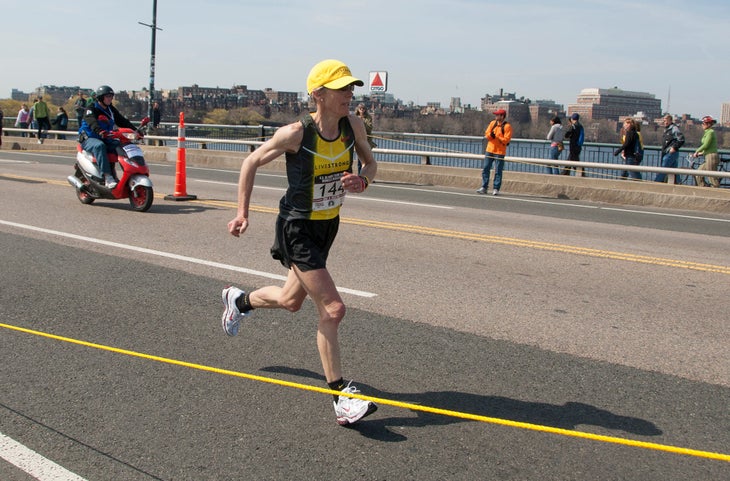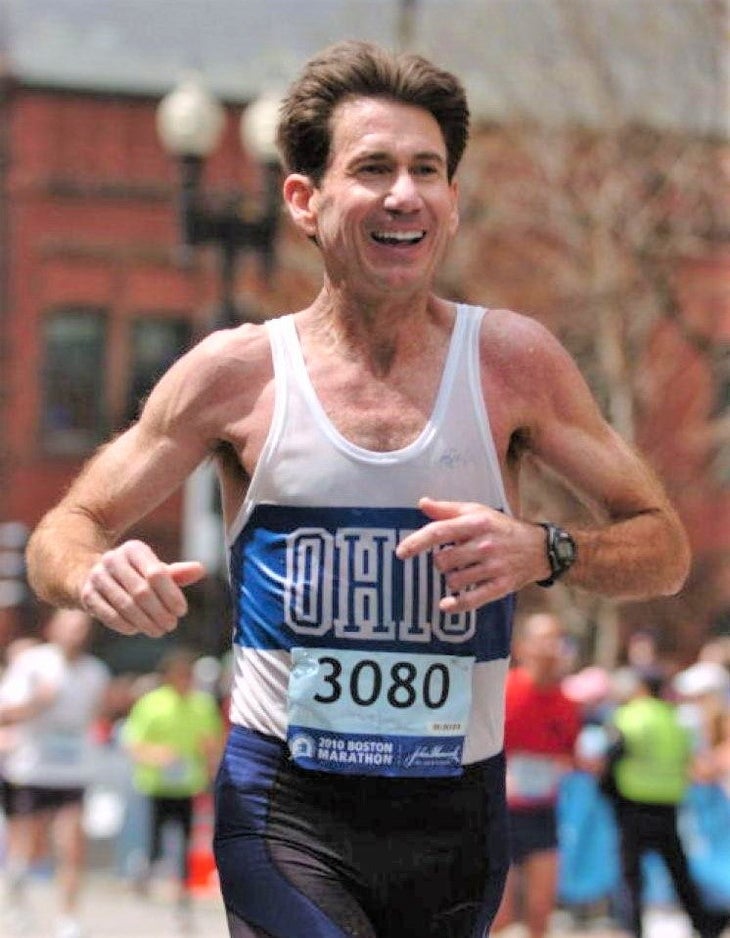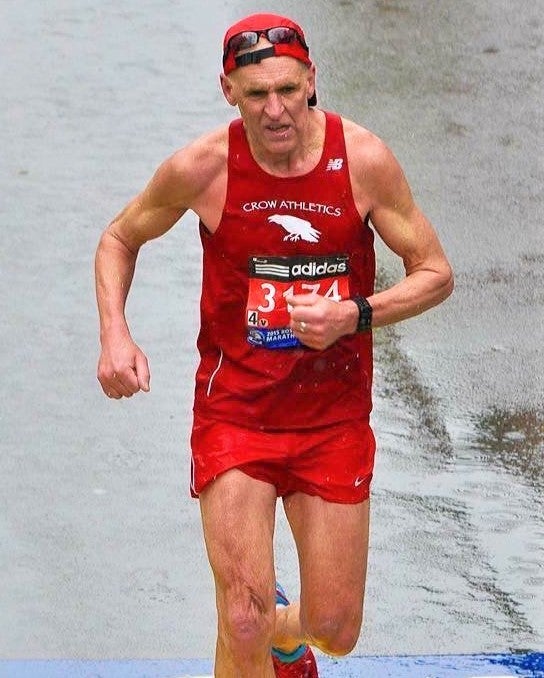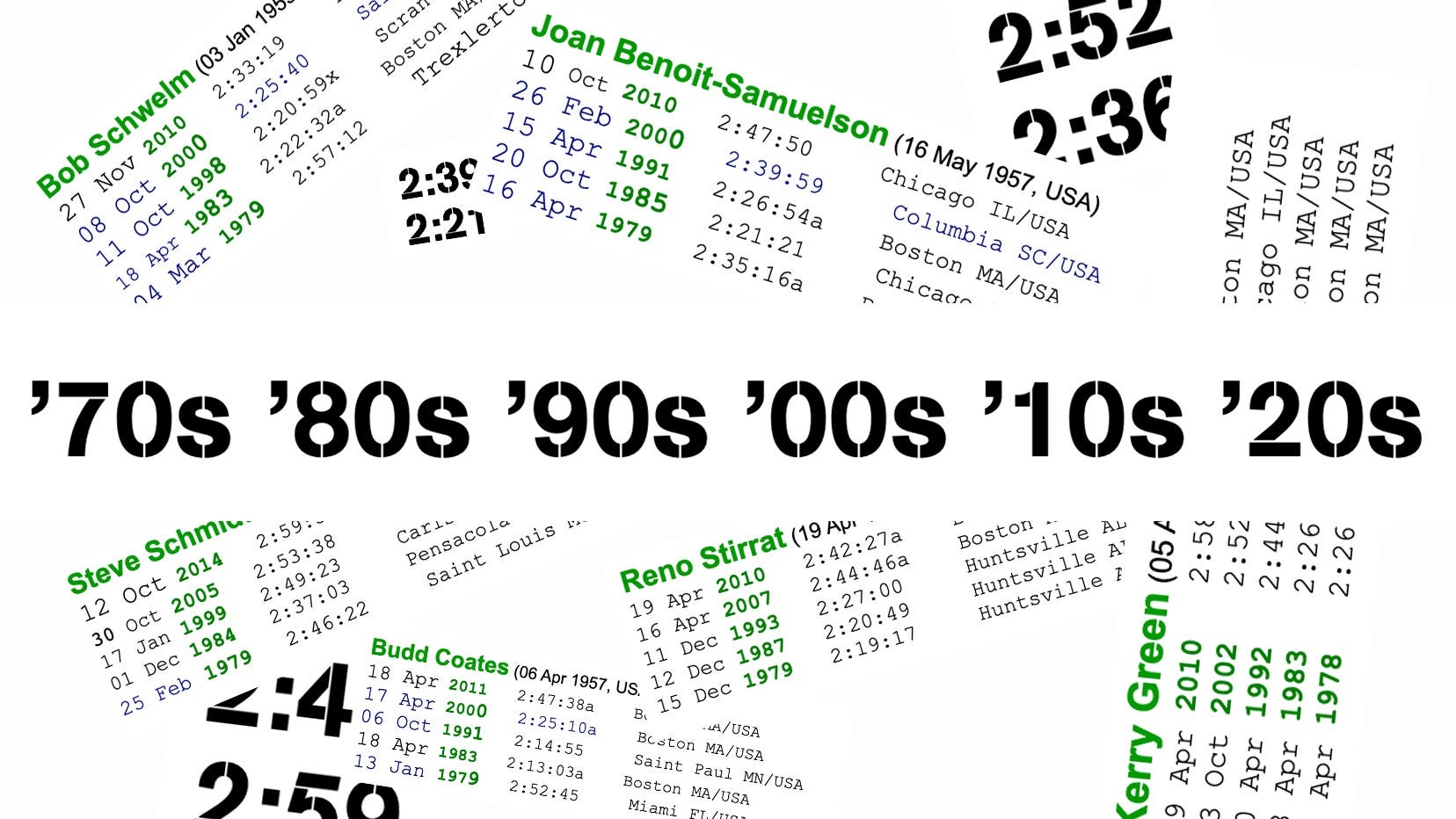Not all great accomplishments are official records. Last year Eliud Kipchoge ran under 2 hours in an exhibition marathon, breaking a barrier once thought unreachable. This year a dozen or so hardy marathon runners will also aim for new territory—a sixth consecutive decade of sub-3-hour marathon finishes, abbreviated 6DS3.
If achieved, this won’t count as a new world record (neither did Kipchoge’s 1:59:40). But it will be noted and appreciated by all who honor high-level marathon performance through the decades.
“My hat’s off to all of them,” says marathon legend Bill Rodgers, four-time winner of both Boston and New York City. “I know how hard it is to keep training for and racing marathons, so I understand the focus, endurance, and good health it takes.”
Origins of an Idea
The chatter over what was then 5DS3 began in early 2010 when Maine marathon stalwart Gary Allen told me that he was hoping for a fifth decade of sub-3-marathons at Boston that April. (He succeeded.) So did a handful of other consistent marathoners whom Allen and I quickly located. To qualify, you had to have run a sub-3 in each of five consecutive calendar decades—1970s, 1980s, 1990s, 2000s, 2010s.
Over the next few years, the Association of Road Race Statisticians recognized the accomplishment, and the 5DS3 list grew to 41 runners. That was then, and this is now. Ten years have passed, a new decade has arrived, and now these guys—and one special woman—face a new and much-tougher challenge: 6DS3.
An Impressive Cohort
I spent the last few months contacting all I could find. Most ran their first sub-3 marathon in 1978 or 1979. They are now 57 to 65 years old, and running fast isn’t as easy as it used to be. No surprise there. But I was impressed by the number taking dead aim on 6DS3.
These runners don’t give up easily. Their stories are inspirational, and their strategies worth considering. Over the next two weeks, I’ll tell you more about them, and how they’ve maintained their high-fit longevity.
Here are a few of the many who may have a chance at joining the highly exclusive 6DS3 group:

Joan Benoit Samuelson
Ladies first. Joan Benoit Samuelson needs no introduction to any marathon discussion. In fact, she doesn’t much like to discuss; I couldn’t get her to respond to my questions. I guess she’d rather train than talk. That’s one surefire way to get the job done. Samuelson ran her first serious marathon at Boston in 1979, finishing in 2:35:16. In 2010, she ran 2:47:50 at Chicago. Now 62, she raced two marathons last year, finishing in 3:04:00 at Boston, and 3:02:21 in Berlin in late September. She’s tantalizingly close.
At several 2019 road-race appearances, Samuelson mentioned her goal of another S3 in 2020, so there’s no doubt she’s quietly running and skiing her way to peak condition this winter. She’s apparently considering Tokyo or London this spring, and Chicago in the fall. [Worth noting: The S3 equivalent for women should be S3:20, so if Samuelson can break 3 hours this year, it’s roughly akin to a man running under 2:40 for 6 decades.]
Bob Schwelm
One Pennsylvania runner who could potentially go sub-2:40 for a sixth-straight decade doesn’t seem particularly intent on his times. Bob Schwelm ran 2:33 in 2010, and promptly retired from racing. Not running, just racing. The owner of four Bryn Mawr Running Company stores in the Philadelphia suburbs, Schwelm, now 60, started a family on a somewhat-delayed schedule, and opted to spend most of the 2010s focused on family and business.
Nonetheless, with an eye to 2020, Schwelm increased his training mileage from 40 to 50 to 60 miles a week last fall, and began including “some faster stuff.” He hasn’t picked a marathon race for 2020, but he’s well situated for a serious marathon effort. “I have the perfect job for running, since it allows me to run at any time during the day with whomever I want,” he notes. “And I have access to a network of physical therapists and chiropractors to keep me healthy.”
Reno Stirrat
Five years older than Schwelm at 65, the high end of the age spectrum for runners attempting 6DS3, Reno Stirrat ran 2:19:17 in 1979 and 2:42:27 in 2010. The retired accountant from Rockaway, New Jersey, has stayed active on the USATF masters circuit, and, thinking ahead to 2020, covered more than 3700 miles in training in 2019.
The thing is, miles don’t count as much as leg health, and Stirrat has been dogged by a series of hip and glute injuries. “My recent training hasn’t included as much quality as previous years,” he admits. “I’m hoping to hold together enough for a sub-3 in 2020.”

Kerry Green
Also 65, Kerry Green from Mansfield, Ohio, ran sensationally in the first half of the 2010s, and won his age-group in every half marathon he entered after turning 60. However, misfortune struck in 2016 when he was mauled by a Great Dane while on a training run. Green was rushed to a hospital, where he had emergency therapy that required months of rehab.
On Boston Marathon day last spring, Green found himself on crutches again, this time after removal of a calcaneal cyst on his left foot. It took him most of the spring and summer to build up to 5 miles of walking. By late September, he had raced 10 miles in 69:41. “Last May I would have said a sub-3 was impossible for me in 2020,” he says. “Now I’m optimistic that I can train steadily, and attempt one in the second quarter of the year.”
Budd Coates
Budd Coates might need an even-longer buildup. The four-time Olympic Marathon Trials qualifier with a best of 2:13:03 had knee surgery in 2:15, and is running nearly bone-on-bone now. As a result, he’s been opting almost exclusively for bicycle and Zero Runner workouts. Still, he’s thinking about attempting a marathon in late 2020. “Fitness wise, I’m fine,” says Coates, 62 and living in Tennessee. “But I know I’d have to work up to a 20-mile run before entering a marathon.”

Gary Allen
As one of the first 5DS3 runners, Maine’s Gary Allen hasn’t lost any enthusiasm for high marathon goals. But for five years, he’s been battling recurrent Lyme Disease that has limited any serious training. Instead he pours his energies into coaching a local cross-country team, and race-directing the Mount Desert Island and Millinocket marathons.
Allen, 62, never considered himself a talented runner, and his marathon best of 2:39:10 from 1984 is one of the slower PRs in the group. He’s not traditionally fast—just strong and tough. “I’m not in shape for a sub-3 in 2020, but occasionally I think about 2021,” he says. “I feel like my never-very-fast, grind-em-out approach just might get me there.”
And it very well might. However, that approach is not unique to Allen. Every runner seeking 6DS3 has had to do a lot of grinding for 40 years. There’s no other way to get the job done.
Next article in series: Meet some more 6DS3 hopefuls, and learn how they have managed to stay fit and healthy through the decades.
–
Amby Burfoot won the 1968 Boston Marathon. He offers KISS Training Programs (Keep It Simple & Smart) at RunWithAmby.com.


